Ever since Kelly Slater first unveiled his man-made tube machine in Lemoore to the spellbound public back in 2015, wave pools have seemingly popped up all over the map. What were once thought of as chlorinated novelties are now the center of a fast-expanding wave pool industry. Do a quick Google search and you’ll find surf parks in Waco, Lemoore, Palm Springs, Melbourne, Bristol, and more. With dozens of others in various stages of planning and construction, artificial waves will likely only become more prevalent in surfing in the years to come.
But in an era where climate change is fueling arctic wildfires, Atlantic superstorms and global sea-level rise, any surfer who still values natural aquatic playgrounds should be asking about the environmental impacts of these surf parks. While it may be a simple question, the answer is, of course, very complicated.
Constructing a surf park is an incredibly resource-intensive undertaking even if everything is done “right.” The cost of constructing a wave pool (including the surrounding facility) falls in the range of anywhere from 20 to 200 million dollars. Just the wave pool itself requires a lot of land. Wavegarden, one of the leading wave-generating technology companies, requires a minimum of 394 x 394 ft (or about 3.6 acres) to build their smallest pool. Their standard size Wavegarden Cove requires 492 x 492 ft (or about 5.6 acres)–and that’s not taking into consideration the additional land required for commercial buildings, beach areas, parking lots, etc.
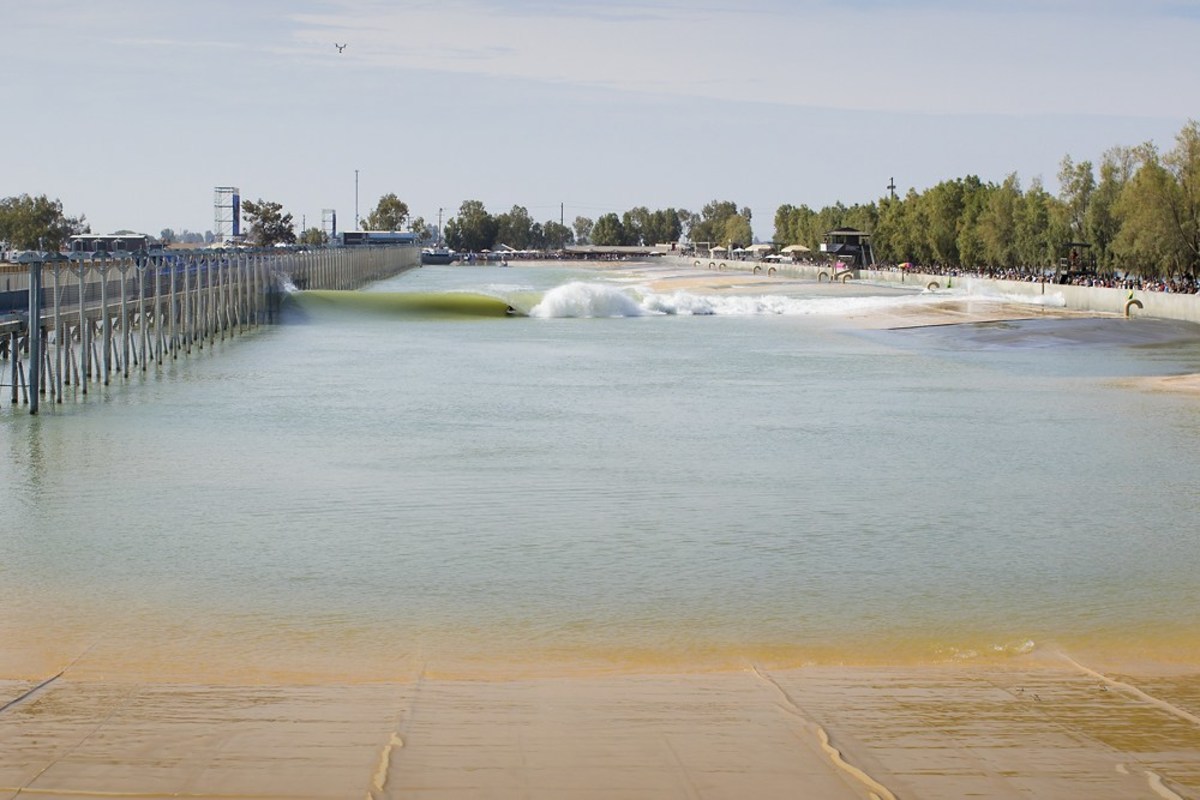
For a hot and arid location like Palm Desert, there would seem to be an inherent danger of overusing water resources in operating a wave pool. Yet Palm Desert will soon to be the world’s wave pool epicenter with four pools within an hour drive of one another, with locations at Wet ’n’ Wild Palm Springs (Palm Springs Surf Club), Desert Willow Golf Resort (DSRT SURF), Coral Mountain (Kelly Slater Wave Co.) and Kohl Ranch (Thermal Beach Club) scheduled to open in the next few years.
When it comes to addressing the environmental sustainability of a surf park, there is a wide range of criteria that needs to be met. Things like wastewater treatment, waste management, reducing harmful emissions, minimizing use of toxic substances (i.e pesticides, swimming pool disinfectants, etc) and more are all factors that go into creating a comprehensive sustainability picture.
We’ve chosen three main elements to consider in assessing a wave pool’s environmental impact: the materials used to construct the wave pool basin and surrounding facilities; how much energy is used to generate the waves; and, of course, how much water is used to keep the pool in operation. While those are by no means the only factors, they are certainly the most obvious, and for the sake of this article, they will be the focus.
Thankfully, many modern wave pools have shown concern for sustainability in those three areas. But even with the best intentions, most cutting-edge technologies and most ethical construction processes, you can’t build any large facility of this kind without some environmental impact. We’ll get to that, but first let’s look at some of the creative ways surf parks are mitigating their impact.
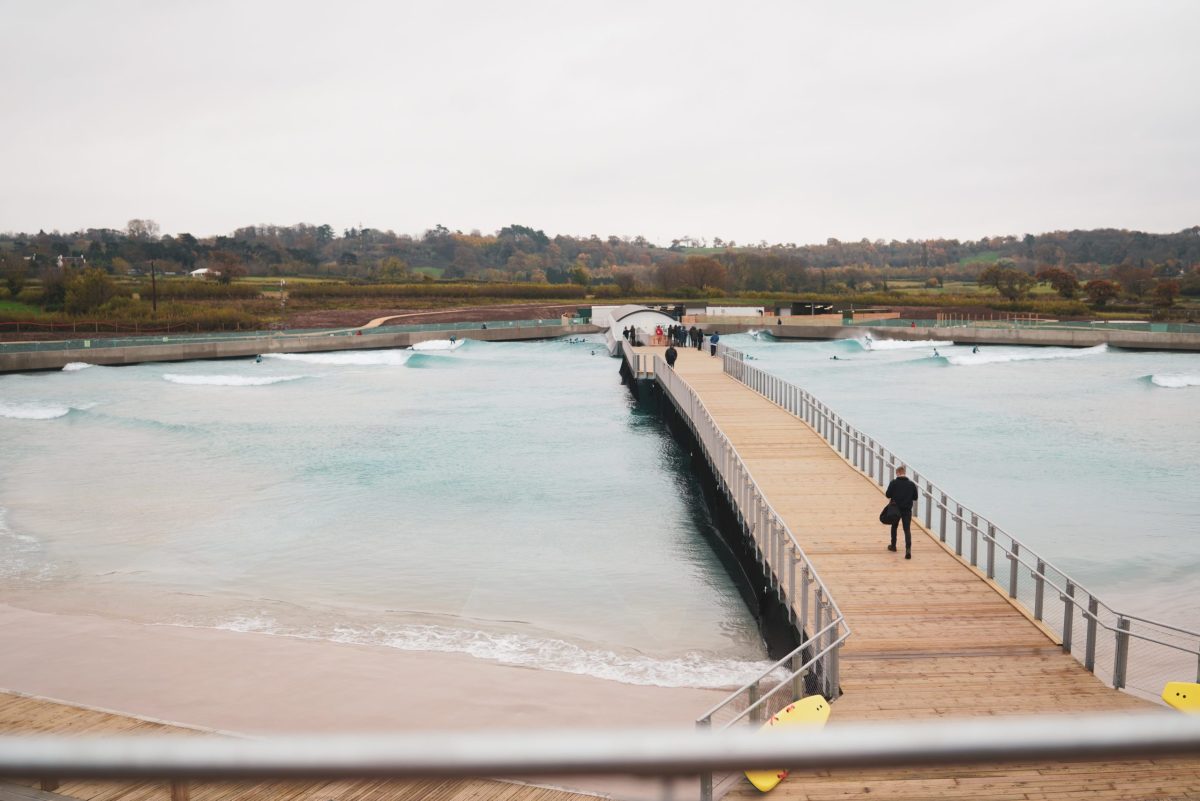
How Wave Pools Are Built
To build any structure, especially one intended to hold millions of gallons of water, you of course need materials that ensure the structure is strong, resilient and safe—which is what makes concrete the most used building material on Earth. Cement (the key ingredient in concrete) production alone accounts for 8 percent of the world’s CO2 emissions, and uses a ton of water—almost a tenth of the world’s industrial water use in 2012. On the flip side, concrete can be recycled, as well as combined with other materials to create strong and safe structures—which is what some wave pools are doing to mitigate their carbon footprint.
In Bristol, UK The Wave has incorporated materials like natural clay plaster on the inside of the clubhouse, recycled steel for the roof, recycled glass in the insulation and recycled building rubble for the work surfaces. Soil fill was used to cut back on the amount of concrete used in the retaining walls of the lake by 50 percent, and plastic fibers were mixed with the concrete used in the lakebed.
The developers of Surf Snowdonia in North Wales—which used to be a former aluminum factory site—also put a heavy emphasis on using recycled materials. During its construction, truckloads of heavy metals and hydrocarbon (the main ingredient in crude oil and most pesticides) were removed from the site, and much of the stone, steel, cast iron and copper was recycled for the facility infrastructure. Over 85 percent of the stone required for construction was used from crushed and repurposed onsite materials.
URBNSURF in Melbourne, Australia has a wave pool basin that incorporates enough recycled concrete to make it the largest recycled concrete structure in Australia. During the park’s construction they incorporated over 18,000 tons of recycled concrete in the walls and floor of the wave pool basin and in the service roads surrounding the park. Additionally, they sourced materials from local suppliers to minimize their carbon footprint from the transport, and they retained all felled trees to use as part of the landscaping.
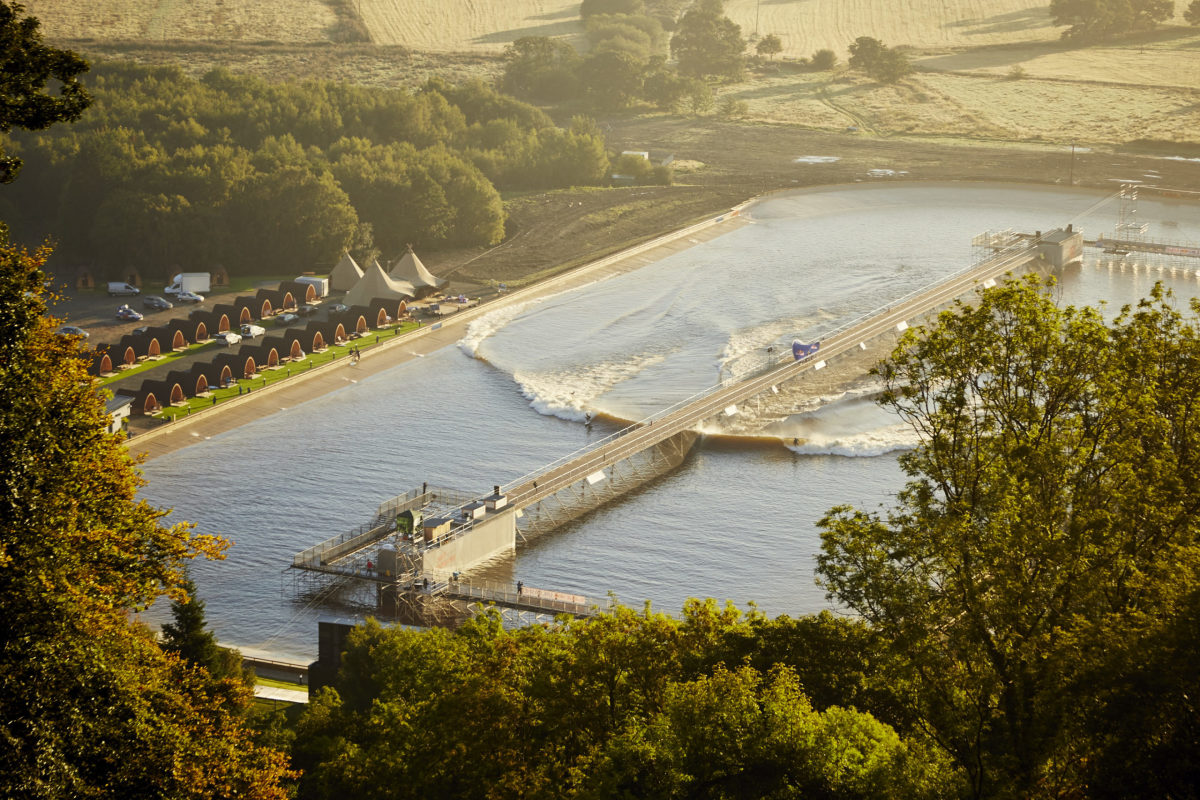
The Water Wave Pools Use
It doesn’t take an advanced degree in environmental science to understand that wave pools require an enormous amount of water to pump out artificial peelers. According to Wired, the Surf Ranch in Lemoore is filled with 15 million gallons of UV-and-chlorine-treated water—250,000 of which can evaporate from the lagoon on an extremely hot day (yeah, not great).
For the surf parks that happen to be in places that receive an abundance of rainfall (e.g. Northern Wales), water scarcity isn’t as much of an immediately pressing problem. However, water is an increasingly deficient resource in much of the world due to growing populations and climate change. According to the United Nations, “over 2 billion people live in countries experiencing high water stress.” The ways in which surf parks manage their water is heavily contingent on location – how scarce water is in that area, how they recycle their water, and how much water is lost due to evaporation.
URBNSURF is situated within the Melbourne Airport precinct, which has an environmental team that CEO Andrew Ross has worked with since the wave pool’s conception to try to manage its resource usage. Their site is connected to the airport’s $11 million stormwater harvesting and treatment system to cut back on water usage.
Surf Snowdonia sits adjacent to a hydroelectric power station, which pulls rainwater from the reservoirs in the Snowdonia mountains and down through the plant to power households in the neighboring areas. The water is recycled from the outflow of the plant, treated with a UV filtration system (versus chlorine or other chemical treatment), and then sent to fill the 6-million-gallon pool.
In California, DSRT SURF’s founders John Luff and Doug Sheres are working with the City of Palm Desert to convert non-play golf turf to native desert landscaping. “We found a solution that effectively involves us taking 20 acres of grass away from the golf courses, not even in play areas of the course,” explains Luff. This program, which they call the “Turf of Surf Program,” will reduce water use at the golf course by 34.8 million gallons a year, 40 percent more water than the lagoon is estimated to use in a year according to Desert Sun News.
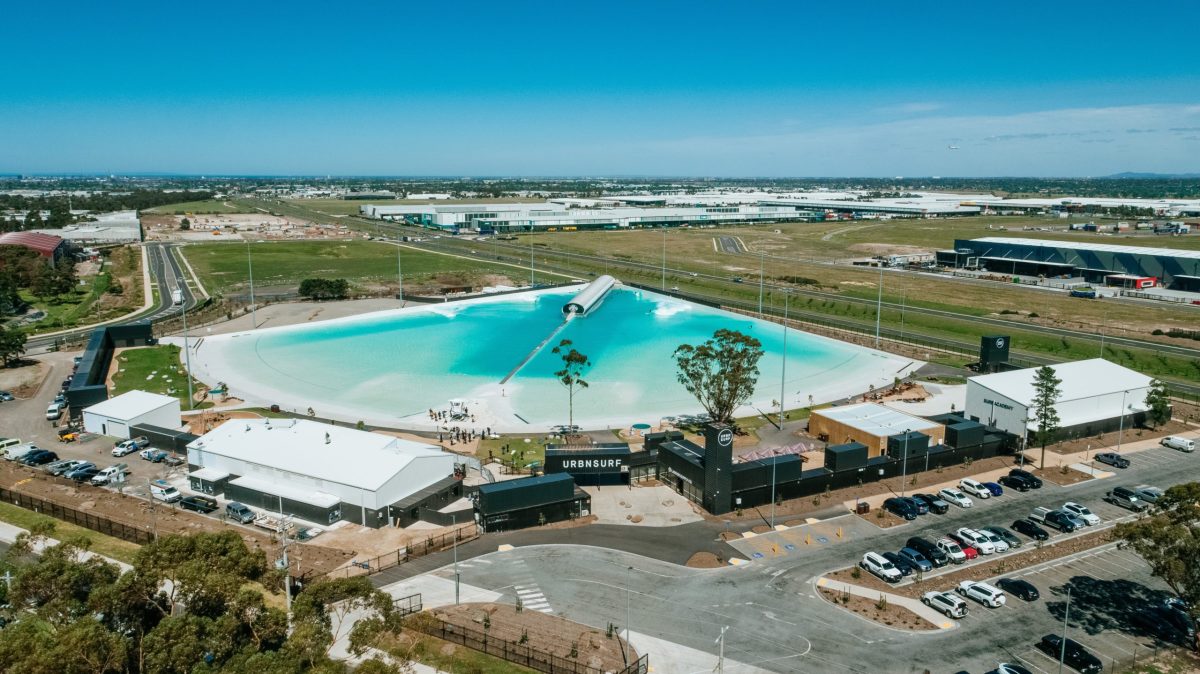
The Energy Needed to Power Waves
The extraction and use of oil, natural gas and coal (fossil fuels) as a main source of energy has put our planet in its current climate crisis. They degrade land and critical ecosystems, they pollute and acidify our waters and they’re responsible for air pollution and serious health implications. Using alternative forms of renewable energy such as solar (which is what the Surf Ranch runs on), wind, and hydroelectricity is a no-brainer, as each has become widely available and trusted ‘clean’ forms of power.
The Wave’s CEO Nick Hounsfield brought on Chris Hines, cofounder of Surfers Against Sewage and now an influential sustainability consultant and speaker, to make sure his wave pool met the best sustainability standards in terms of energy usage. In fact, Chris Hines went as far as striking up an agreement that he would only agree to come on board if the pool was powered by 100 percent renewables (which it is now). In his opinion, “you cannot justify running a surf park if it’s going to have a detrimental effect on the climate and oceans through its energy and/or material and resource use. It’s morally wrong and against the spirit of what surfing’s about”. (We couldn’t agree more).
Likewise, URBNSURF’s CEO Andrew Ross also prioritized the usage of renewables. “100 percent of the energy we consume on site, including for the operation of our wave generator, is sourced from an energy provider that generates 100 percent renewable energy for supply into the Australian energy grid,” says Ross.
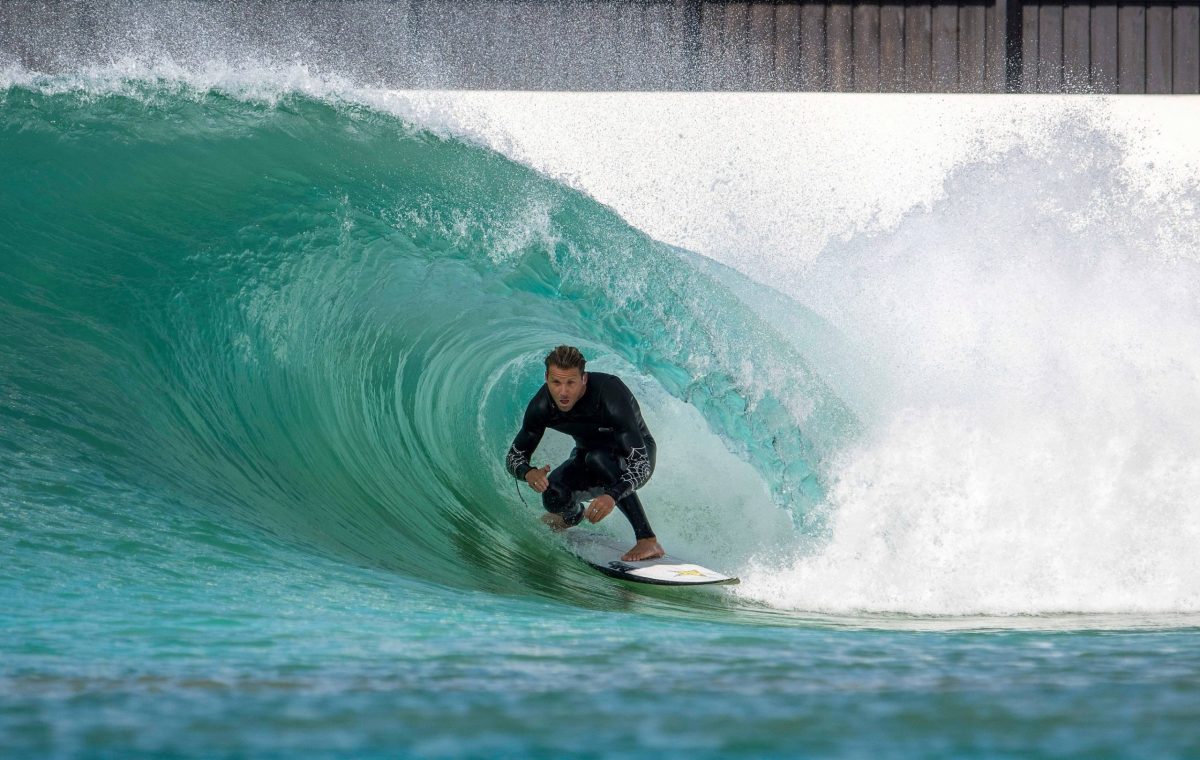
How Do We Know if a Surf Park Is Sustainable?
Well, that depends on how you define it. “Sustainability” is a heavily marketed term that can oftentimes be misleading. What it actually means to be “sustainable” is relatively ambiguous, yet it’s demanded by consumers.
When it comes to wave pools, organizations like STOKE Certified have emerged to try to help surfers and consumers “duck dive the greenwash” by analyzing the environmental impact of these facilities. And their analysis of wave pool operations goes far beyond just recycling and carbon offsetting.
Jess Ponting, an Associate Professor in Sustainable Tourism at San Diego State University and co-founder of STOKE, believes there is a way forward in terms of a sustainability standard. “The STOKE standard helps developers systematically across a range of hundreds of sustainability data points, to figure out what they need to work into all aspects of their surf parks – from surf schools to hard surfing equipment, from their restaurants to their facilities,” says Ponting.
“Both tech companies and developers are, in my experience of working with several of both, genuinely concerned about being as sustainable as possible” Jess shares. “The main shortcoming across the industry at this stage is the lack of a clear and comprehensive approach to sustainability. Most efforts, while very commendable, are happening in isolation. Wheels are being invented and reinvented. Facets of sustainability beyond environmental performance are being overlooked in some cases for want of an understanding of what good sustainability practice might look like.”
Accreditation processes like STOKE require surf parks to go through a continuous evaluation (every 2 years) to keep up with evolving sustainability standards. Additionally, the finished reports on how surf parks measure up to the list of criteria are made public on their website.
But even if surf parks continue to find increasingly creative ways to mitigate their environmental impact, you cannot build anything without at least some degree of impact. At least for surf parks, which are used by a group of people who care about the environment innately, we can insist that our patronage requires operators to hold their facilities to the highest environmental standard.
But Ponting is optimistic that surf parks can make a change for the better. “I see potential for this industry to showcase all kinds of best practice sustainability measures, to educate about sustainability… local environmental issues, social justice issues (race, gender, indigenous peoples), surf therapy etc. I see opportunities to bring new demographics into a space for learning about marine and coastal conservation, even creating new activists for those environments who live nowhere near them.”
So what can surfers do? “Vote with their wallet,” says Carl Kish, co-founder of STOKE. “Similar to how more surfers are being concerned with what food they’re eating, where their clothes are coming from, and how their boards are being made, surfers can influence the future of surf parks by supporting those wave pools with authentic and transparent sustainability claims. Ask questions, learn, and duckdive the greenwash—surf park developers will take notice.”
This article originally appeared on Surfer.com and was republished with permission.
from Men's Journal https://ift.tt/2XEEKo4


0 comments